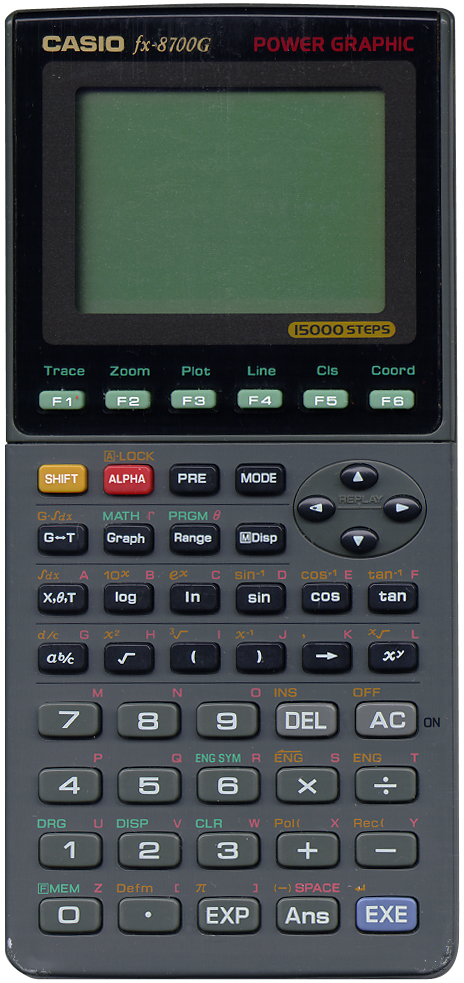
Terminated: unknown
This calculator (as do many other CASIO scientific calculators) uses one and the same key for both the constant π as well as exponents. This works as follows. When you first enter digits, the EXP key will enable you to enter the exponent, otherwise it will enter the constant π.
The calculator has quite some memory (15000 steps).
The menu keys take a little getting used to, even more because the display width is different from the added with of the six function keys. The menu function for F1 for instance doesn’t appear directly above the key.
Other that that the menu-operated functions of this calculator work really well. Take for instance the built-in matrix operations. There’s a menu entry for entering data into matrixes A and B, and menus to perform matrix operations, which will be stored in matrix C. There’s also a full blown text editor in this calculator, which even includes search functions.
I found this calculator on a flee market in Paris in 1999, and it’s rather worn. Somehow this calculator’s paint comes off easily. I was pleasantly surprised to find it in working order. With working batteries even!
Some drawbacks, to switch it off you have to use "shift-on", and another drawback is the fact that it requires four expensive batteries. And the fact that some of the functions are only available using the menu keys, but that’s probably just a matter of getting used to.
Another flaw with this calculator (and many of the other CASIO models in this series) is the so called protective cover, which in many cases does more damage than it does good. When sliding the cover on and of the display can easily get damaged, and almost all of these CASIO’s have scratches on the display. In my opinion this is a very stupid design flaw. Users beware!
The funny thing with calculators bought on street markets is that sometimes the calculator’s memory contains the strangest things. Like in this case.
The built-in text editor contained a file named "GRENDEL" with the
following contents:
,
I m easy like
Sunday morning..
Hi Lenny, I just
wanted to do
something else
than this stupid
math exercise I
just can t get
the hang of. So
I decided to
write a really
cool and
interesting note
with a really
cool name like
GRENDEL, that
will get erased
real quick
because I have
absolutely
nothing of great
interest to say.
Well, I guess I
should stop my
stupidities here
so bye, and see
around...
Anonymous
There was also a program with the following contents:
6x5 KOALA,MA GEISHA
MA FLEUR AU JASMIN
BONNES VACANCES TU
VAS ME MANQUER
TOI-NON-PLUS